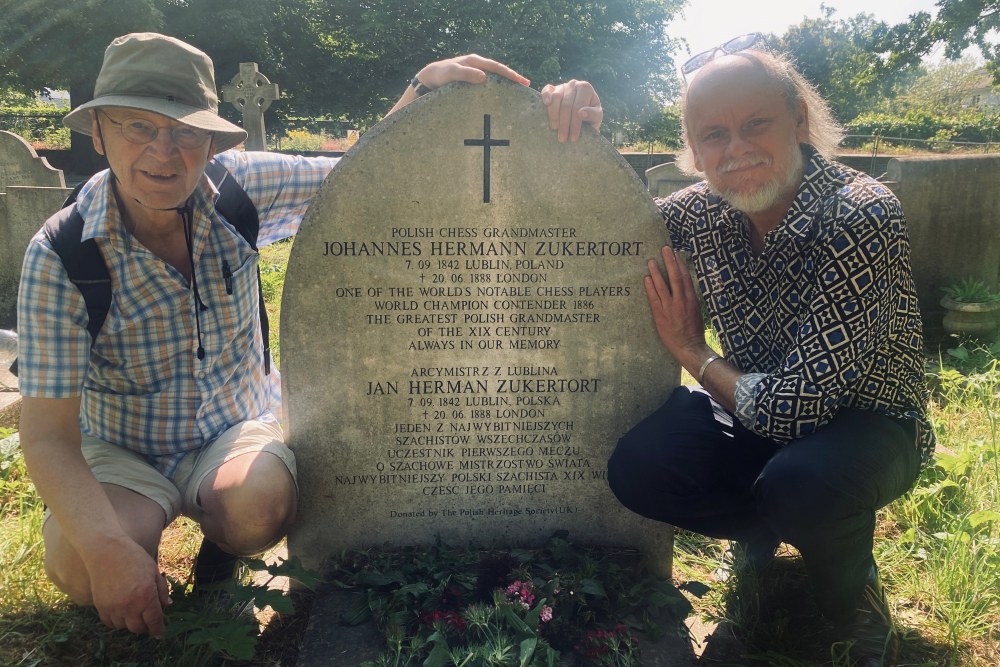Graves are places that inspire remembrance, to commemorate and pay respect to important personalities or loved ones. The grave sites of great chess players have not always received the care and appreciation that those buried there deserved. The grave of Johannes Zukertort might have been completely forgotten today if Stuart Conquest had not read in 2011 about the tragic end of this important chess master and the subsequent burial in the London Brompton cemetery.
He set out to find the grave site of Johannes Zukertort and eventually found it in the cemetery, — but only the remains of the grave site were found. Zukertort’s grave, with a horizontal memorial stone, was by now deeply sunken, hardly recognisable.
Stuart Conquest approached the Polish Heritage Society in England and found an open-minded listener for his request in its chairman, Dr Marek Stella-Sawicki. The society provided funds and the Polish Chess Federation, on the initiative of the historian Tomasz Lissowski, organised a fundraising campaign to restore the grave and provide it with a new memorial stone.



 Learn about one of the greatest geniuses in the history of chess! Paul Morphy's career (1837-1884) lasted only a few years and yet he managed to defeat the best chess players of his time.
Learn about one of the greatest geniuses in the history of chess! Paul Morphy's career (1837-1884) lasted only a few years and yet he managed to defeat the best chess players of his time.With permission from the cemetery administration, Stuart Conquest dug up the horizontal gravestone and had it cleaned. In addition, a new vertical gravestone was made and erected, providing information about Zukertort’s life in Polish and English.
As was discovered during the restoration of the grave site, there were two other older graves below Zukertort’s grave, but they were not connected to Zukertort.
On 26 June 2012, the restored grave site was presented to the public with a solemn ceremony attended by around 10 chess players and about 20 representatives of Polish cultural heritage. The memorial service was led by Rev. Walter Jagucki, Bishop Emeritus of the Lutheran Church in Great Britain, and Rev. Wladyslaw Wyszowacki, Rector of the Polish Catholic parish of Balham in South West London.
Johannes Zukertort (1842-1888) was born in Lublin (Poland) and developed into an outstanding chess master in Breslau with the help of his chess teacher Adolf Anderssen. Zukertort settled in London in the early 1870s and was one of the best players in the world in the 1870s and 1880s. His most significant success was his victory in the London tournament of 1883, in which he left the best players of his time, including Wilhelm Steinitz, far behind. In 1886, he faced Wilhelm Steinitz again in the first so-called “Competition for the World Chess Championship”. Zukertort took the lead in this match, but fell ill and eventually lost the competition.
Two years later, on 19 June 1888, he collapsed during a friendly game against Sylvain Meyer in Simpson’s Divan and died the next morning.
In 2012, representatives of Polish heritage in England voted Johannes Zukertort as the most outstanding Polish sportsman of the 20th century.
Recently, Helmut Pfleger met Stuart Conquest in London and visited the grave of the famous chess player.
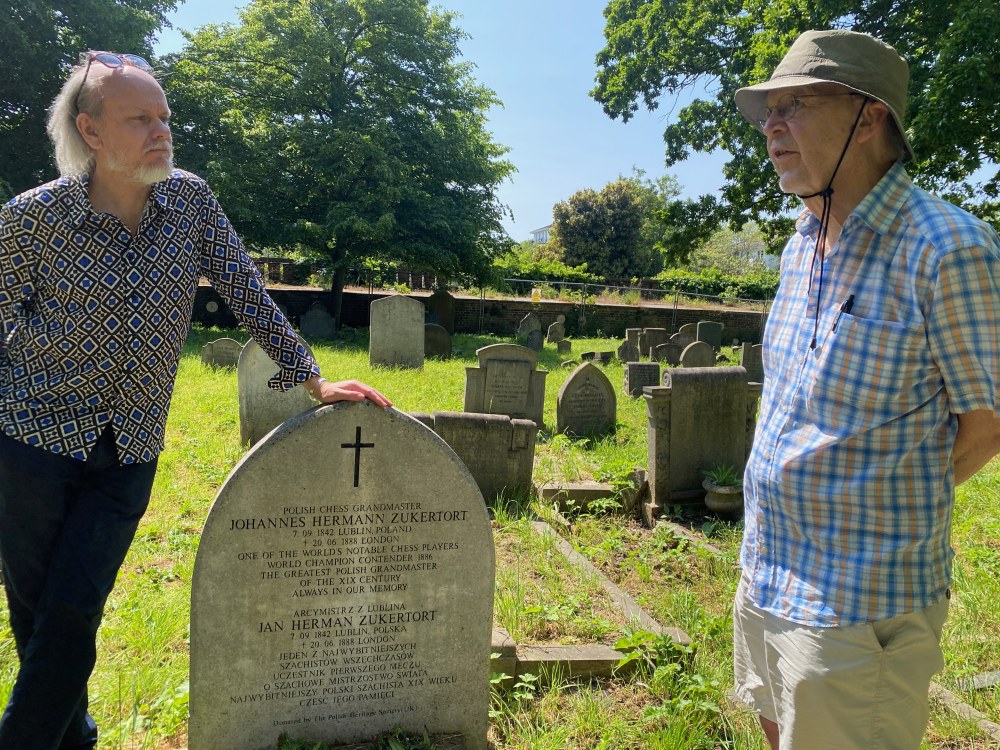
Stuart Conquest and Helmut Pfleger
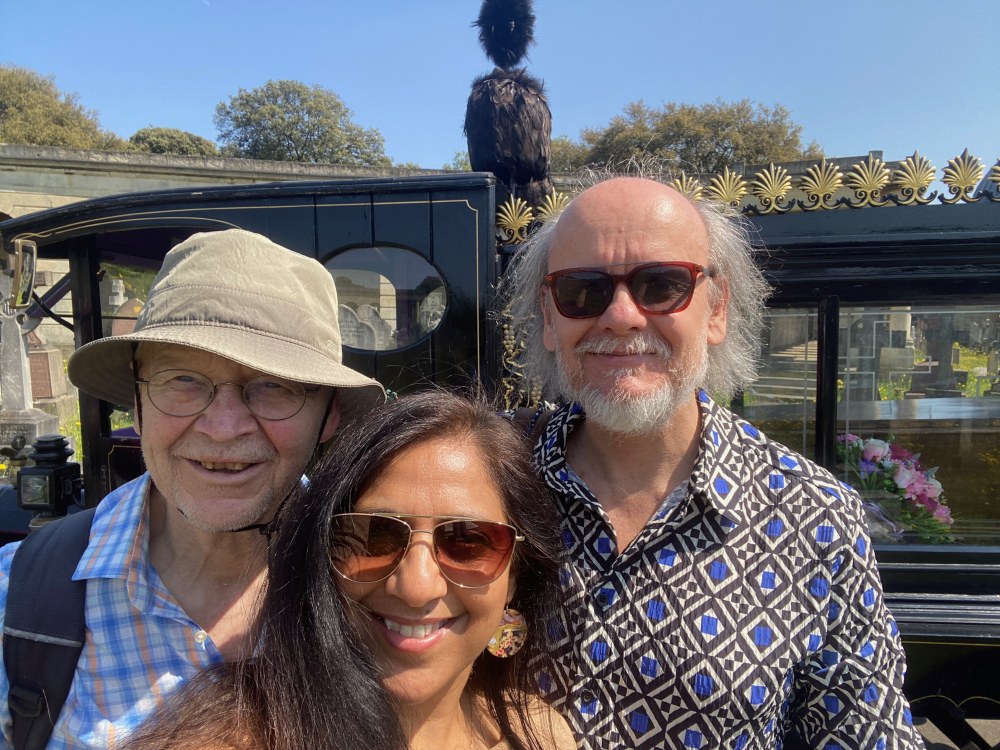
Helmut Pfleger and Stuart Conquest with his partner Prashila
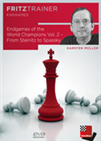 Enjoy Capablanca's fine technique, Tal's magic, Lasker's fighting spirit, Petrosian's defensive skills, Smyslov's feeling for harmony, and Alekhine's and Spassky's flair for the attack.
Enjoy Capablanca's fine technique, Tal's magic, Lasker's fighting spirit, Petrosian's defensive skills, Smyslov's feeling for harmony, and Alekhine's and Spassky's flair for the attack.In his chess column in ZEIT Magazin, Helmut Pfleger recalled the first defeated competitor in a World Championship match and the rediscovery of the grave site and its restoration.
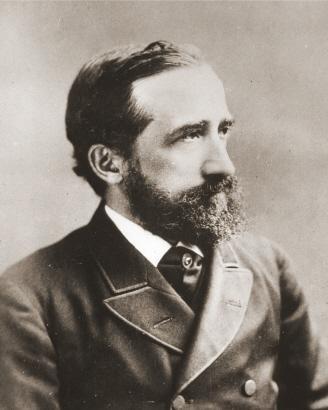 |
Johannes Hermann Zukertort
* 7 Sept 1842 in Lublin, Poland
+ 20 June 1888 (at 45), London, England
Grave site:
Brompton Cemetery, AF 107 x 18
West Brompton, Royal Borough of Kensington and Chelsea, London, England
|
Links
